Hi,
I am not very experienced in UML, so this is probably a very simple question. How can I depict a method call to a different class from a member method call? Or am I supposed to show this?
For example, class Foo has a "FooMethod". Class Bar has a "BarMethod". Foo calls FooMethod, which calls BarMethod before returning.
To show this, I draw a self method call in Foo's lifeline. Then I draw a method call to Bar in the gap between Foo's self call's start and end. The diagram in the top link depicts this situation. Is it correct?
Thanks
